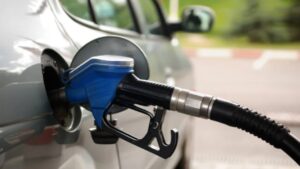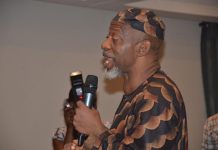The problems Nigeria has with energy are well known. Deep-seated corruption and nepotism plague the oil and gas industry, particularly the downstream sector, rendering it mainly ineffective and under-utilized. Specifically, fuel subsidy removal remains Nigeria’s longest challenge, especially at a time when the trust deficit between the governed and the government widens. Having failed to deregulate and implement its price modulation agenda in 2016, higher inflation and worsening poverty continue to undermine the government’s decision on subsidy. Nigeria’s petroleum subsidy cost has risen by 1,452 per cent from N257.36 billion in 2006 to N4 trillion in 2022. According to the defunct Petroleum Products Pricing Regulatory Agency (PPPRA), it costs Nigeria about N8.94 trillion to subsidize petrol between 2006 and 2015. Nigeria’s 2022 petroleum subsidy budget is more than half what it cost the country to subsidize the product for 10 years. While the arguments for subsidy removal are valid, worries about the likely turnout of any social resistance, going by the 2020 EndSARS protests, remains a concern for the present and incoming administration.
Already, the Centre for the Promotion of Private Enterprise (CPPE) has expressed reservations about government’s political will to remove fuel subsidy. CPPE said the timing of the proposed subsidy removal, alongside the 2023 elections, raises concerns for political actors to implement certain anti-populist policies. CPPE’s CEO, Dr. Muda Yusuf, said it is doubtful the government would be able to exercise the political will to effect subsidy removal given the closeness of the timing to the 2023 elections. Therefore, on account of political exigencies and push back by the ruling party and labour, the economy may have to bear the heavy fiscal burden of subsidy in 2022.

The economics of fuel subsidy
With 36.9 billion barrels of proven oil reserves, Nigeria has the second-largest reserves in Africa (after Libya) and used to be the continent’s largest oil producer until operational challenges undermine production. Yet Nigeria is the only member of the Organisation of the Petroleum Exporting Countries (OPEC) that imports refined fuel, and often suffers scarcity despite NNPCL’s importation monopoly. The ordinary Nigerian by no means feels rich, but divided among nearly 200 million people, the Gross Domestic Product (GDP) averages just $1,695 per person yearly. Prior to the partial subsidy removal, the pump price of fuel was N65 ($0.40) per litre, against a landing cost of N139 in 2012. The government, therefore, contributed a N73 subsidy, for an annual total of N1.2 trillion ($7.6 billion), or 2.6 per cent of the country’s GDP. In effect since 1973, the subsidy was regarded by a majority of Nigerians as one of the few benefits they enjoyed as citizens of an oil-producing country. It was therefore not surprising that on January 9, 2012, a week after the announcement of the subsidy removal, industrial strikes and demonstrations spread nationwide. That reaction prompted the government to bring down the new petrol price from N141 to N97, still higher than the old price but retaining a partial subsidy.
Today, what appears to be a blessing to Nigeria in terms of improved earnings due to extended production cuts by OPEC and OPEC+, leading to rising in crude oil prices, is becoming a problem for the nation’s ‘managed’ downstream deregulation when the price of petrol is expected to be adjusted accordingly. With the exception of epileptic power supply that makes many depend on the use of generators, Nigeria’s poor rely primarily on public transportation, as such their per capita fuel consumption is significantly less than the country’s rich, who generally use private vehicles. Neighbouring countries also benefit significantly from Nigeria’s fuel subsidy through smuggling.
The World Bank Country Director, ShubhamChaudhuri, was not specific on the subsidy exit strategy, but was certain the programme is not sustainable anymore though there were ‘no answers’ to the lingering questions it has raised. He, thus, suggested a healthy dialogue as a necessary route to achieving “a national consensus” on the exit strategy on subsidy removal and how to manage the impacts its eventual removal could leave on struggling Nigerians. He insisted that the scheme does not benefit the majority of poor Nigerians, as most public transport vehicles run on diesel. Despite the widespread condemnation, most economists and stakeholders agree that the removal of the subsidy is a necessary step towards long-needed reform since the country has failed to make refineries work.
All eyes on Dangote
With the coming on stream of the 650,000 barrels-per-day Dangote Petroleum Refinery, there are expectations that the refinery’s capacity is large enough to meet domestic demand for fuel and other petrochemicals. There are however concerns that the country is putting its eggs in one basket by depending solely on a single supplier for its petroleum products. This probably informed NNPC’s new deal to revamp the non-functional assets, particularly the Port Harcourt refinery, with an Italian Firm, Maire Tecnimont SPA for a full overhaul is expected to cost $1.5 billion. With the hype and hope, many Nigerians already think the project would bring a lot to the table so much so that it would reduce the pump price of petroleum products but as far back as 2016, Dangote Refinery had said it would be subsidy neutral.
The assumption that a private refinery will solve the country’s subsidy problems is rather misconceived and mischievous. Dangote can be in business refining 650,000 barrels a day, yet there will be shortages in the country, if the law and policy are not right. While there is unanimity on the heavy burden of the subsidy, rancour and confusion reign over the solution. Government compounds this dilemma by holding on to its four state-owned refineries that process no products but endlessly receive cash for phantom turnaround maintenance. Indeed, the hope Dangote refinery brings is refreshing but relying on a single project to rescue the oil and gas sector of the world’s 13th-largest crude producer points to the height of systemic and institutional failure, years of neglect that has riddled the sector and its growing weakness.

To satisfy the refinery’s feedstock locally, the Minister of State for Petroleum, Timipre Sylva, promised that the country would have to supply well over 471,000 barrels, which is the equivalent of Nigeria’s daily demand. This will save the nation about $8.7 billion per annum but it also means the country would lose at least $11 billion of forex earnings a year — an amount estimated to be about a third of the country’s total annual forex earnings. That is at an average cost per barrel of $64. At about $100 a barrel, the loss can be better imagined. At very low production output, there are concerns about Nigeria meeting the feedstock for Dangote Refinery. The tough question is whether Nigeria could possibly ramp up local crude production by 650,000 over the next five years. No question that it would be technically possible. The NNPC insists its medium-term target is three million barrels a day production. The reality is that Nigeria hardly does half of the targeted volume. With the inefficiency of the state-run refineries, the market would solely be that of Dangote when the refinery comes on stream. Hence, the need for a strong competitor to mitigate the negative effects of its monopoly. The proposed BUA refinery is yet to commence. But going by what has been witnessed in the Cement industry, Nigeria should expect very little in terms of market-driven competition.
If Nigeria decides to continue to moderate the pump price of petrol when Dangote Refinery commences operations, it only means the government could end up exchanging a corrupt and opaque fuel subsidy programme that purports to assist ordinary Nigerians with a hidden corporate subsidy that assists a multibillion-dollar business entity. Many years after shifting the goalpost on commencement of operations, the Dangote Refinery is yet to become a reality and may be pushed into the election year as the project, though claimed to be ready, may need more than six months to be functional. The real challenge the government faces is winning the trust of the people. Working Nigerians are hurting, and their livelihoods are in danger despite economic recovery figures and rising inflation. They want to know that the government has a credible plan, and the challenge will arise as oil prices rebound amidst calls for the government to quickly implement post-subsidy programme. For now, it is not about what will be done but how households will be protected from the impact of subsidy removal.




























